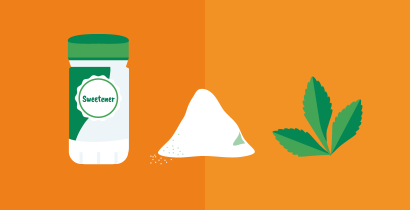Are food products with more than five ingredients unhealthy?
Last Updated : 23 January 2025
There’s a common myth that food products with more than five ingredients are automatically “unhealthy.” This belief stems from the idea that the more ingredients in a packaged food, the more highly processed or “unnatural” it probably is, and thus “worse” for our health. But that’s not necessarily the case. Let’s explore why the number of ingredients in a product isn’t the best determinant of its healthiness.
Take, for example, the argument that foods like red meat, which is a single-ingredient product, must be good for us by default. This logic falls apart when we apply it to other single-ingredient substances like pure alcohol or toxic plants such as deadly nightshade. Both are naturally occurring, yet harmful, despite being composed of just one ingredient. Similarly, maple syrup is a natural, single-ingredient food, but does that mean it’s automatically healthy? While a small amount of maple syrup can be a tasty addition to our breakfast, eating large amounts can contribute to an excessive intake of sugars, increasing our risk for chronic diseases like cardiovascular disease and type 2 diabetes.1,2
Even "natural" foods like red meat and maple syrup can become unhealthy if eaten in large quantities. Red meat, when eaten daily in place of plant-based proteins, has been linked to a higher risk of chronic diseases like coronary heart disease.3 It's not about avoiding these foods altogether, but rather understanding that the health impact of a food product is determined by how much and how often we eat it, not just the number of ingredients.
Conversely, many highly processed foods that contain multiple ingredients, such as fortified plant-based drinks, may actually be a source of essential nutrients. They contain added vitamins and minerals like calcium and vitamin D, which can be valuable for those who avoid dairy. Many processed foods may also contain emulsifiers, preservatives, or other food additives, lengthening the ingredients list, but providing important functions. Food additives make food look or taste better, keep food safe and stable, and aid in the processing and manufacture. All food additives have been thoroughly tested, classified as safe and approved for use by the European Food Safety Authority (EFSA). Their safety is also regularly evaluated to ensure that any newly generated scientific evidence is taken into account, and if needed, measures are taken to protect consumers.
Simply counting ingredients without understanding their function or nutritional value doesn’t provide an accurate picture of a food’s healthiness. Instead, consider whether the product is rich in beneficial nutrients, such as dietary fibre, vitamins and minerals, and other nutrients we should limit, such as (saturated) fat, salt, and sugar. A helpful guide is to look at the ingredient list and the order of which the ingredients appear: ingredients that are present in a high quantity appear near the beginning of the list and those present in a smaller quantity appear near the end of the list. For example, if a food or drink has “sugar” or “butter” among its first few ingredients, you’ll know that they’re the main ingredients and the product is therefore likely to be relatively high in sugar and fat.
Takeaways
- The length of an ingredient list alone doesn’t determine a food’s healthiness. Instead, focus on the nutritional content and the presence of beneficial or harmful ingredients.
- Ingredients on food labels are listed in order of predominance by weight. This can help you identify products high in fat, sugar, and salt. Make sure to also check the nutrition label to help you spot these.
- Ingredients like emulsifiers preservatives, and other food additives are added for functional purposes and are added in safe and regulated amounts.
- Enjoy single ingredient foods but remember that even they can be harmful in excess. Consider quantity and frequency and how they fit into your overall eating pattern and lifestyle.
References
- EFSA Panel on Nutrition, Novel Foods and Food Allergens (NDA), Turck D, Bohn T, Castenmiller J, de Henauw S, Hirsch-Ernst KI, et al. (2022). Tolerable upper intake level for dietary sugars. EFSA Journal 20(2)
- Lichtenstein AH, Appel LJ, Vadiveloo M, Hu FB, Kris-Etherton PM, Rebholz CM, et al.; American Heart Association Council on Lifestyle and Cardiometabolic Health; Council on Arteriosclerosis, Thrombosis and Vascular Biology; Council on Circulation. (2021)
- Hidayat K, Chen JS, Wang HP, Wang TC, Liu YJ, Zhang XY, et al. (2022). Is replacing red meat with other protein sources associated with lower risks of coronary heart disease and all-cause mortality? A meta-analysis of prospective studies. Nutrition Revi



